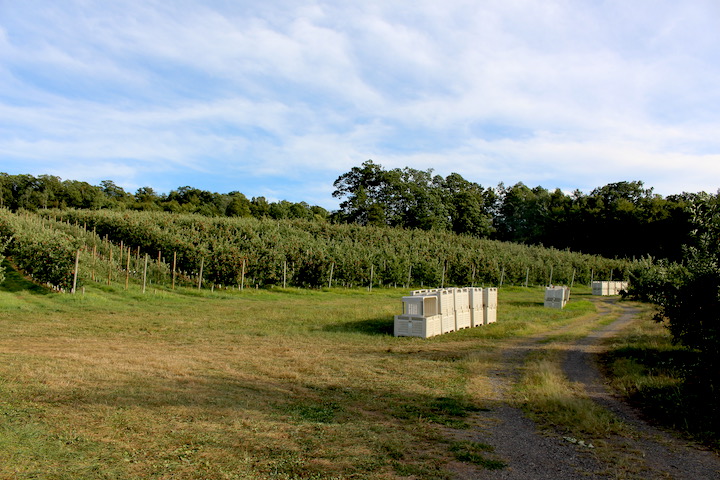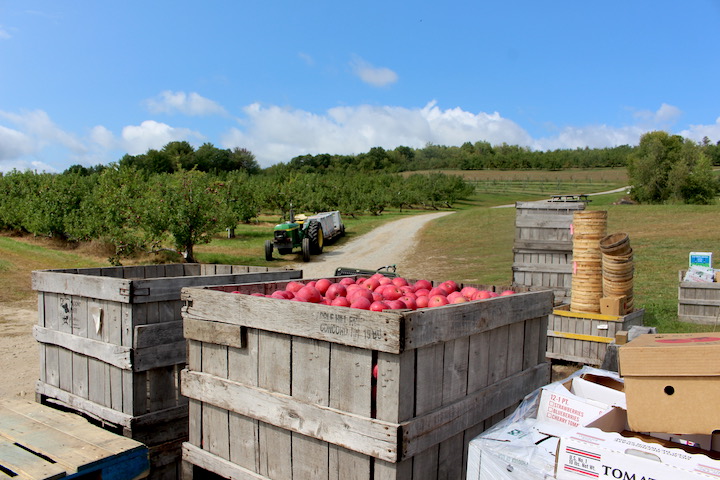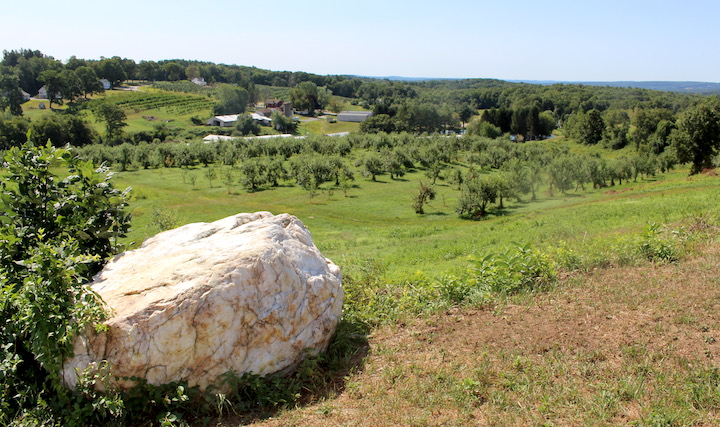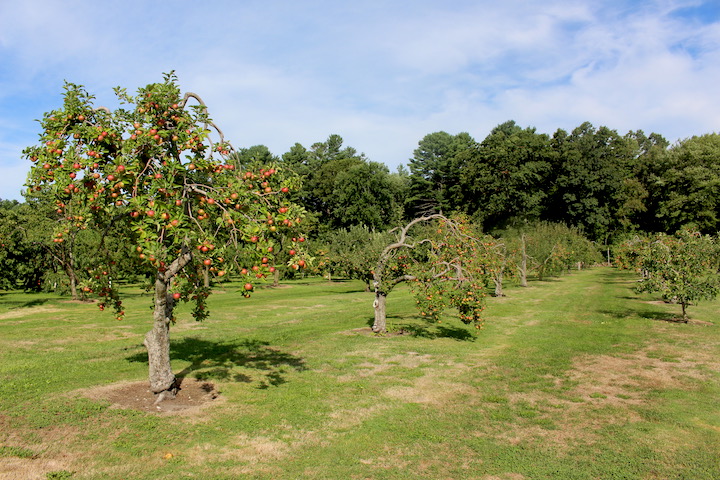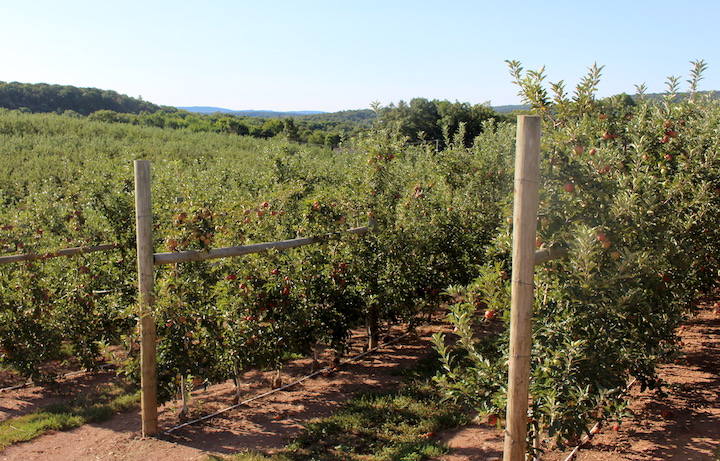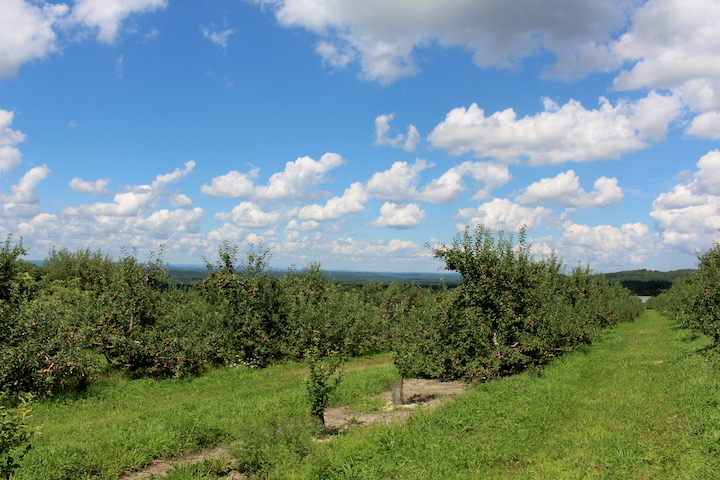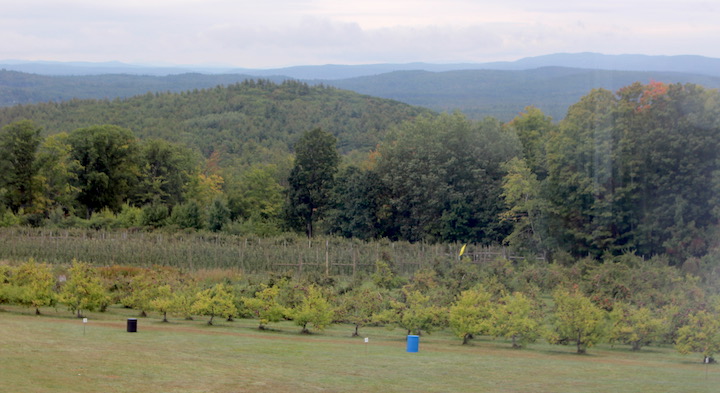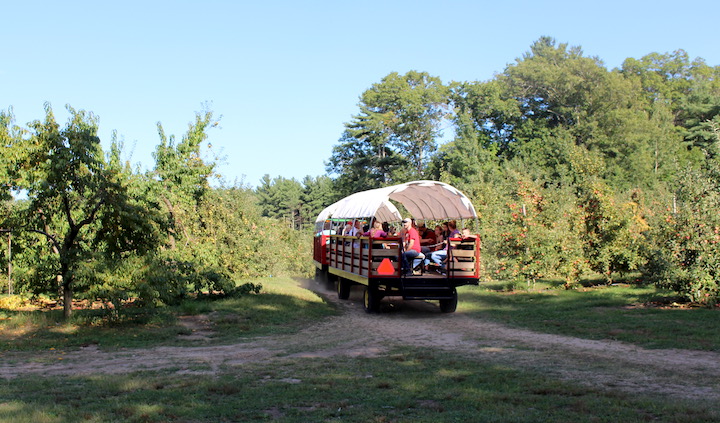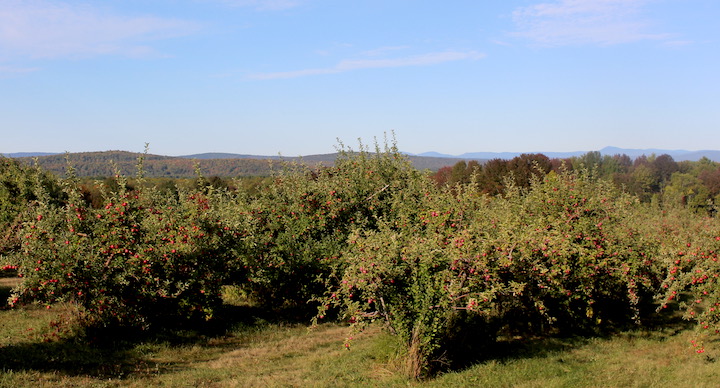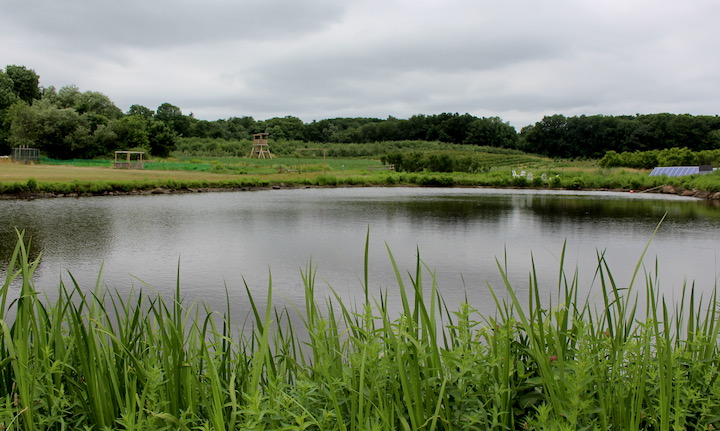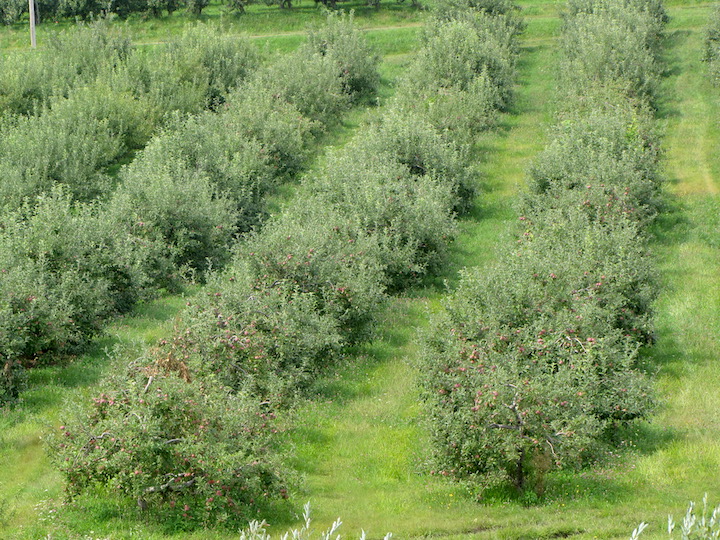
MOST OF NEW ENGLAND’S FRESH-GROWN APPLES are consumed right here where they are grown. That means consumers get the freshest fruit possible.
Apples travel better than most fruits, but like any produce, they always taste best closest to home. Growers in other regions wish they could replicate McIntosh’s iconic flavor, a product of New England’s cool nights and rocky soils. Honeycrisp grown elsewhere is a good apple; a New England-grown Honeycrisp is sublime.

Even widely grown varieties like Gala are a little juicier and sweeter closest to where they are grown.
THE BIGGER BENEFIT of locally grown apples is that, because they do not have to be built for long-distance travel, growers can cultivate a wide range of varieties that greatly expand our experience of this remarkable fruit. New England orchards produce apples in an incredible array of colors, textures, and, most of all, flavors, compared to the handful of varieties shipped here from other states and countries.
More than 200 varieties are photographed and described using the Apples tab on the home page of newenglandapples.org alone!
New England’s relatively small land area, combined with its unique geography and dense population, gives consumers unprecedented access to its apples, from the produce aisles of our supermarkets to farm stands to the orchards themselves, where the fruit is grown. You can even harvest your own fruit or meet the grower in many cases!
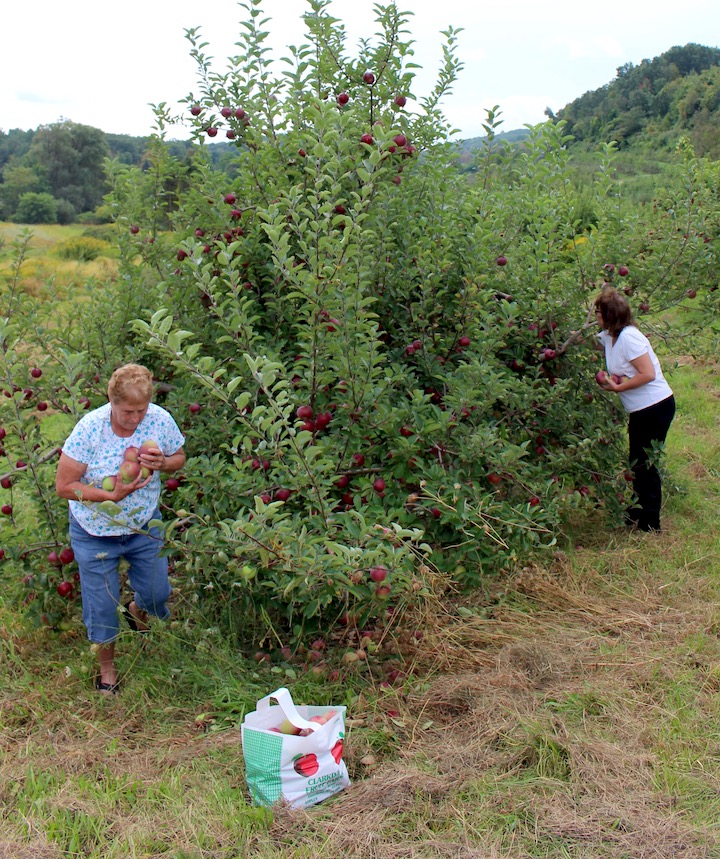
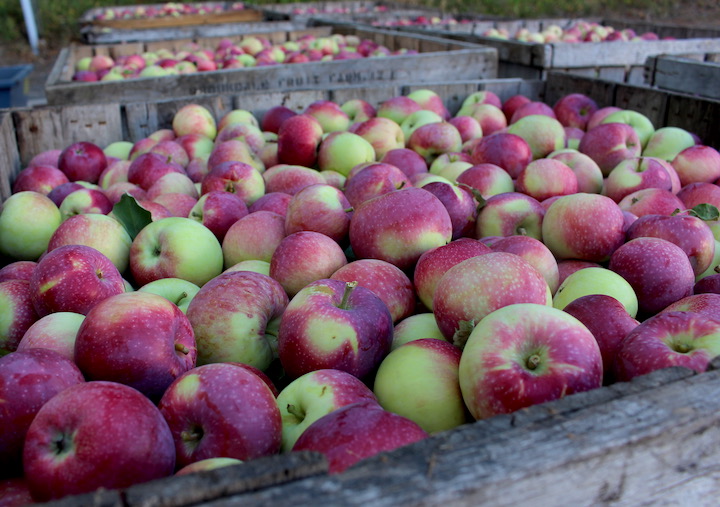
Consult our Orchard Finder for a list of some of New England’s finest orchards. In addition to apples, many offer a range of fruits and vegetables, and some have bakeries or restaurants, plus some of the most spectacular scenery New England has to offer.
* * *
THIS WEEKEND marks a transition from early to mid-season apples. We will have examples of both at the New England Apples booth in the Massachusetts Building at the 17-day Eastern States Exposition (“The Big E”), which opens Friday, from 10 a.m. to 9 p.m.
The booth features fresh apple cider from Carlson Orchards, Harvard, Massachusetts, and smoothies, slushies, and hot cider to quench every thirst. We will have single-serving apple pies, apple pie squares (new this year), and cider donuts every day, and apple crisp on weekends.
We will have our new 2022 New England Apples wall calendar for sale, and it is a beauty!
But most of all we will have plenty of fresh apples, as many as 15 varieties over the course of the fair, including eight this weekend:
AKANE, Clarkdale Fruit Farms, Deerfield, Massachusetts; CORTLAND, Pine Hill Orchards, Colrain, Massachusetts; ROYAL GALA, Carlson Orchards, Harvard, Massachusetts, and GALA, Pine Hill Orchards; GINGER GOLD, Red Apple Farm, Phillipston, Massachusetts; HONEYCRISP, Pine Hill Orchards and Red Apple Farm; McINTOSH, Pine Hill Orchards and Red Apple Farm; PAULA RED, Red Apple Farm; and RED GRAVENSTEIN, Red Apple Farm.
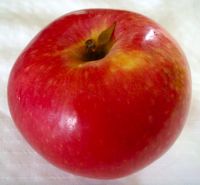
Click on the highlighted apple or orchard name for more information
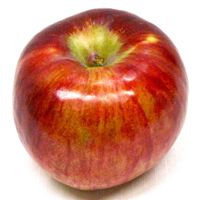

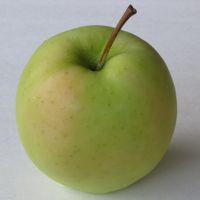
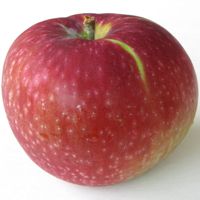
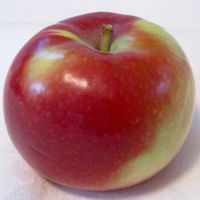
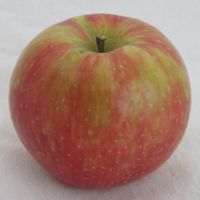
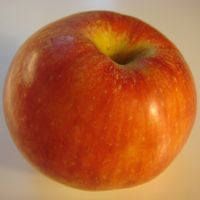
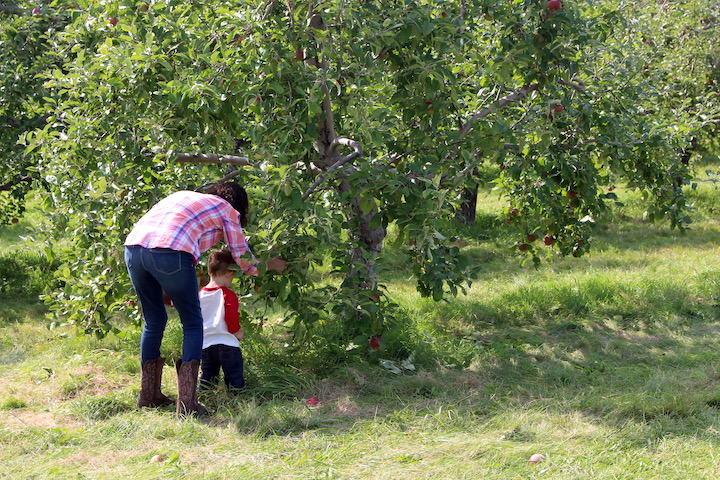
* * *
IT SHOULD COME AS NO SURPRISE that many New England orchards include “hill” in their names. Unlike field crops such as potatoes or spinach, the tall, deep-rooted apple trees excel on sunny slopes, providing visitors with a double benefit: the freshest fruit available, and some of the best views around.
If you are planning a trip to the Big E this weekend, stop by for a taste of New England!
If not, there’s no better time to visit an orchard, and the weather looks ideal for picking.
